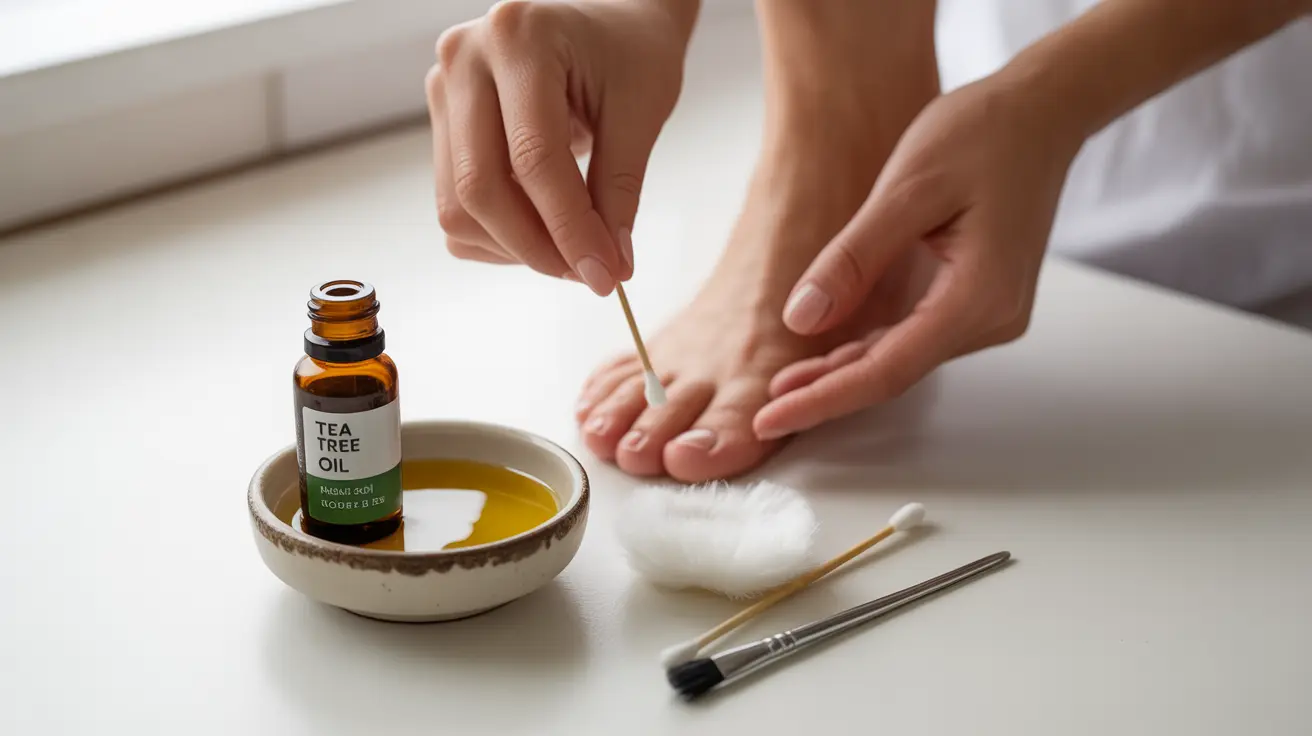Struggling with stubborn toenail fungus? Tea tree oil has emerged as a popular natural remedy, thanks to its potent antifungal properties. This essential oil, derived from the Australian Melaleuca alternifolia tree, offers a promising alternative for those seeking natural solutions for fungal nail infections.
Understanding how to use tea tree oil effectively and safely for toenail fungus is crucial for achieving the best possible results. Let's explore the science behind this natural treatment, proper application methods, and what you can realistically expect from using it.
Understanding Tea Tree Oil's Antifungal Properties
Tea tree oil contains powerful compounds, particularly terpinen-4-ol, that exhibit strong antimicrobial and antifungal properties. These natural compounds can penetrate the nail bed and combat the fungi responsible for nail infections, including the common dermatophytes that cause most cases of toenail fungus.
How to Use Tea Tree Oil for Toenail Fungus
Proper Dilution and Preparation
Before applying tea tree oil to infected toenails, proper dilution is essential. Mix tea tree oil with a carrier oil such as coconut oil or olive oil in a 1:1 ratio. This dilution helps prevent skin irritation while maintaining therapeutic effectiveness.
Application Steps
- Clean and dry the affected toenail thoroughly
- Mix equal parts tea tree oil and carrier oil
- Apply the mixture to the infected nail using a cotton swab or clean brush
- Gently massage the solution into and around the nail
- Apply twice daily, morning and evening
- Continue treatment for several months, as nail fungus requires consistent care
Safety Considerations and Best Practices
While tea tree oil is generally safe for topical use, following proper guidelines is crucial to avoid adverse reactions. Never apply undiluted tea tree oil directly to the skin or nail bed, as this can cause irritation, redness, or allergic reactions.
Precautions to Take
Before starting treatment, perform a patch test on a small area of skin to check for sensitivity. If you experience any adverse reactions, discontinue use immediately and consult a healthcare provider.
What to Expect During Treatment
Treating toenail fungus with tea tree oil requires patience and consistency. While some people may notice improvements within a few weeks, complete treatment typically takes several months as the infected nail grows out and is replaced by healthy nail tissue.
Signs of Progress
- Reduction in nail discoloration
- Decreased thickness of affected nail
- Less brittleness and crumbling
- Improved overall nail appearance
Frequently Asked Questions
How effective is tea tree oil for treating toenail fungus compared to antifungal medications? Tea tree oil has shown promising results in studies, though it may work more slowly than prescription medications. While conventional antifungal medications often show higher success rates, tea tree oil can be an effective alternative or complementary treatment, particularly for mild to moderate infections.
What is the best way to apply tea tree oil to toenail fungus for optimal results? The most effective application method involves diluting tea tree oil with a carrier oil, applying it to clean, dry nails twice daily, and massaging it thoroughly into and around the nail. Consistency and proper application technique are key to achieving results.
Are there any side effects or risks associated with using tea tree oil on infected toenails? The main risks include skin irritation, allergic reactions, and contact dermatitis, particularly if the oil is used undiluted. Always perform a patch test and stop use if you experience any adverse reactions.
Can tea tree oil completely cure toenail fungus or prevent it from coming back? While tea tree oil can effectively treat toenail fungus, complete cure rates vary. To prevent recurrence, maintain good foot hygiene, keep feet dry, and consider periodic preventive applications even after symptoms resolve.
Is it safe to use pure tea tree oil on toenail fungus, or should it be diluted with a carrier oil? Tea tree oil should always be diluted with a carrier oil before application. A 1:1 ratio with a carrier oil like coconut or olive oil provides safe and effective treatment while minimizing the risk of skin irritation.




